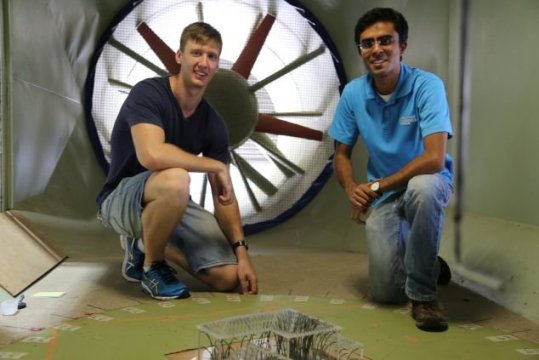
New homes are increasingly being built with unusual roof shapes, and new research by James Cook University reveals the potential for some new designs to lose roof cladding if houses aren’t well maintained or have minor construction defects.
JCU’s Korah Parackal says roof shapes have become more complex since the 90s, when wind tunnel tests for the current wind load standards for roofs were conducted.
A team of researchers looked at how the aerodynamics of the new roofs compared to the Australian wind loading standards — the code that engineers and builders use when designing houses.
“Houses used to be square boxes, with standard shape roofs, but in recent times custom shapes have become common. With the new shapes we see wind force acting in new ways on roofs and we wanted to see if the wind loading standards still applied,” he said.
The team built scale models of houses with typical new roof shapes and tested them in the wind tunnel at JCU’s Cyclone Testing Station.
“We built 1/50 scale models and fitted them with pressure sensors, then we tested wind loading for roof cladding, wall cladding and truss hold-down,” said Mr Parackal.
The technique allowed comparisons to the Australian standards for any wind speed for a house in suburban terrain.
“The current building standards can underestimate suction pressures on roof edges of houses with complex roof shapes, and more so for two storey houses,” he said.
Source: Modern roof shapes tested against big blows — ScienceDaily


